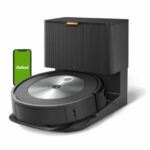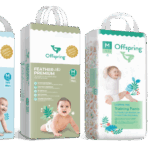Let’s face it – Studying isn’t exactly a child’s favourite thing to do! Still, as parents, there are steps you can take to create a more comfortable and conducive study space at home so that junior will be more inclined to hit the books! A comfortable work space is the key, but short of giving a child an entire home office, what’s the best option for families, especially those who live in close quarters? Here are some tips that might help.
Table of Contents
Allocate a suitable study area
Designate a room, area or even a specific table as your child’s learning space. Setting aside a specific area of your home where studying takes place will make it much easier to work on creating a set environment conducive to learning, much like a classroom atmosphere. It will be a space associated with studying, learning and productivity. Having a designated area also helps keep things in perspective and also, your child will always know where school materials are located.
De-clutter & organise
A cluttered surrounding lends no appeal to a study space. In fact, stacks of workbooks and papers on a study desk make studying appear as a daunting task. Help your child to get organised as the first step in creating a more conducive study area. Learning material should be stored in filing cabinets or folders according to subject for easy reference. Your child can even step up the game by placing a chart on the inside front cover of the folders to track the amount of time spent studying for each subject, and also to note what chapters and assignments have been completed. This will help him or her not only to keep thing organised, but to document all learning accomplishments as well.
Study-conducive shades
Did you know that certain colors are conducive to learning? Psychological color studies have managed to conclude the following:
Children in elementary school grades benefit from the stimulation of warm colors (think yellow-orange and peach).
Older children concentrate better when surrounded by cooler hues, like light blue, green or violet.
If it’s possible, painting the walls of your child’s study area a study-conducive shade might just give him or her the extra edge in studying!
Make learning enjoyable
There are times when it’s best to leave kids to their own devices so that they can be independent. However, when it comes to learning, showing interest in your child’s ideas and progress makes the process of learning an encouraging one. Ask your child what materials or environment he or she needs to effectively learn and study within the home. Little things like a favoured chair, nice stationary as well as selected relevant pieces of deco which will spice up the space will help boost the mood to study.
Monitor/filter noise & distractions
The key to any kind of productive studying is concentration, so the quieter, the better! Whether your child is working independently or together with you, sounds from phones, televisions or people talking are capable of causing distraction – even if it is coming from another room. Be aware of when your child is studying and encourage family and visitors to avoid unnecessary interruptions, such as loud video games or conversations. Consider turning off or silencing your child’s electronic devices that can interfere with their concentration during study time.
Making do with what you have
A desk or small table specially for studying purposes means that your child will have some working space to spread homework materials out. If a child must work at a common area like the dining room table, at least make sure the area is clutter-free. For larger areas, modulated sections can be set up and you can add to them as kids grow older and their needs change.
Good ventilation
Proper ventilation is always a good thing in any area of a house, and your child’s study area is no exception. Ensure that the designated study area you have set up for junior has good aeration so that it does not get stuffy. Open up windows nearby regularly to let fresh air into the area and to relieve the study space of any stale air and scent.
















